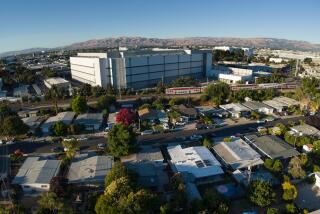San Diego Aglow Over Fusion Center
- Share via
SAN DIEGO — This city’s selection as headquarters for a prestigious $1.2-billion fusion research center is being touted as proof that the once-sleepy Navy town will enter the next century as one of the world’s most respected centers for scientific research.
The bold predictions are fueled by the International Thermonuclear Experimental Reactor (ITER) program’s decision Tuesday to pick San Diego as the base for an unprecedented, six-year attempt to design a reactor capable of withstanding the tremendous heat needed to harness fusion energy.
The project does not, however, include funding to build the next-generation fusion device.
Also, it is unclear just how many scientists would move to Southern California for the design and engineering project. Earlier in the week, San Diego officials predicted that as many as 200 scientists from the United States, Japan, Europe and the Soviet Union would move to San Diego for the ITER project.
But those predictions became doubtful when ITER officials on Wednesday acknowledged that while a single site would be preferable, political realities and scientific pressures meant that the unprecedented gathering of fusion researchers would instead be split among San Diego and satellite facilities in Japan and Germany.
“A single site is much better than three sites,” acknowledged Boris Nikipelov, one of the Soviet Union’s representatives on the ITER site-selection team. A single site would be “much easier to organize and it costs less,” Nikipelov said.
Charles Maisonnier, one of Europe’s representatives on the ITER team, said he was “disturbed” by newspaper stories that earlier in the week pegged San Diego as headquarters for the project. Maisonnier instead insisted that the ITER program would be divided equally among participating countries.
Although the gathering of researchers will be split among San
Diego and satellite facilities in Japan and Germany, “the center of intellectual activity will be here,” UC San Diego Chancellor Richard Atkinson boasted during a press conference Wednesday.
ITER, when coupled with San Diego’s reputation as a mecca for life and physical science research, ensures that the city will soon be known as “one of the three or four key (research) centers in the world,” Atkinson said.
Yet Atkinson acknowledged that San Diego’s bid for the ITER project was almost dashed by foreign scientists’ concerns about the poor condition of California’s elementary and secondary schools.
Atkinson said it was an “incredible embarrassment” for the “rest of the world to be worried about sending their kids” to schools in the United States.
ITER will pump an estimated $200 million into the local economy. The project will buy goods and services from San Diego vendors; scientists and their families will rent homes in the area and make purchases at local retail stores.
The intense negotiating sessions that led up to San Diego’s selection as host city for the ITER project are proof of how difficult it is to set up international research consortia. Negotiations have been under way for a year, with teams meeting in Washington, Japan and Europe.
More to Read
Sign up for Essential California
The most important California stories and recommendations in your inbox every morning.
You may occasionally receive promotional content from the Los Angeles Times.













